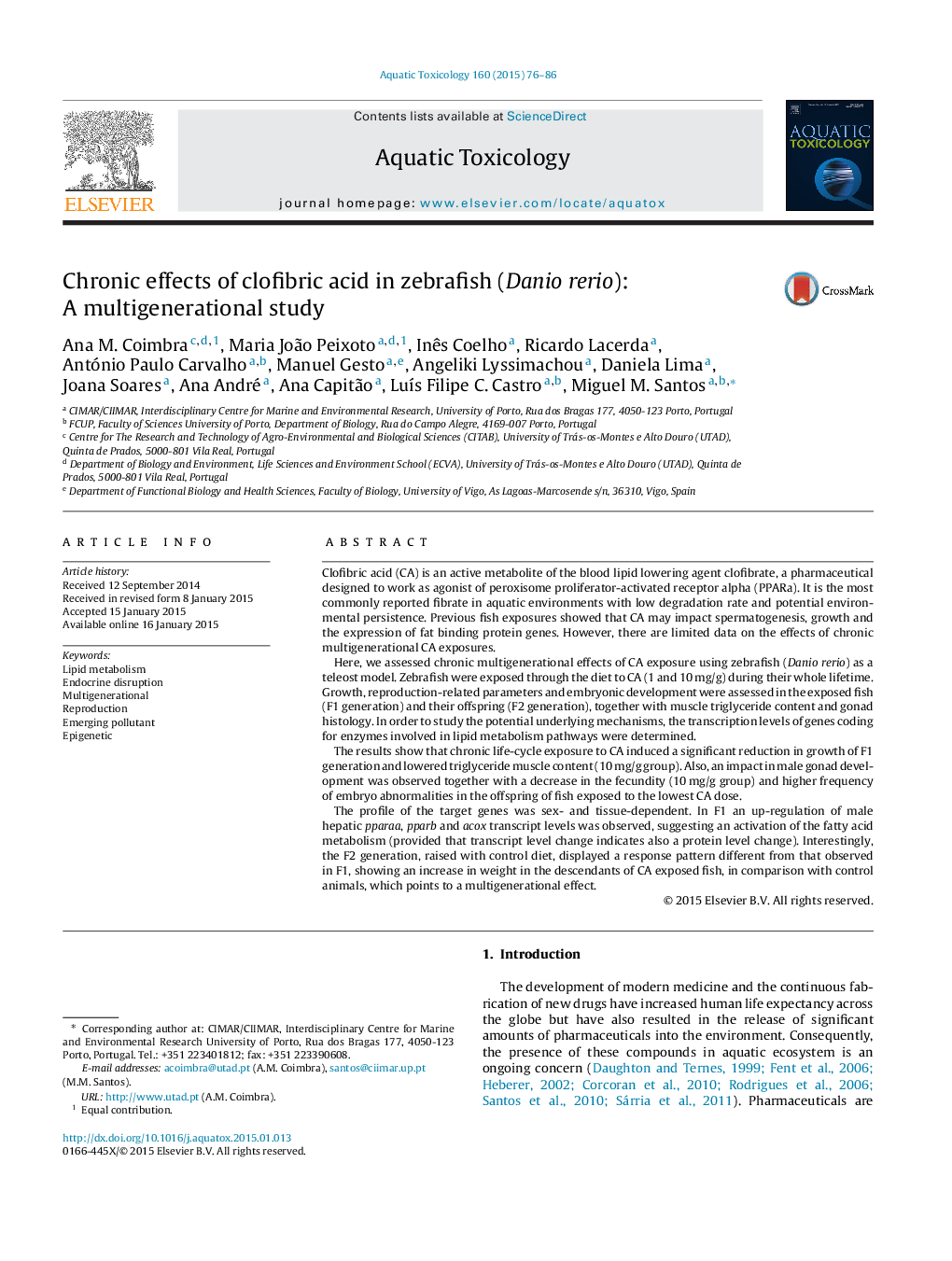| کد مقاله | کد نشریه | سال انتشار | مقاله انگلیسی | نسخه تمام متن |
|---|---|---|---|---|
| 6382240 | 1625945 | 2015 | 11 صفحه PDF | دانلود رایگان |

- Clofibric acid (CA) induces multigenerational effects in zebrafish (Danio rerio).
- CA impacts fish lipid metabolism, with similarities to those reported in mammals.
- Weight is impacted in F1 and F2 generations, thought with opposite patterns.
Clofibric acid (CA) is an active metabolite of the blood lipid lowering agent clofibrate, a pharmaceutical designed to work as agonist of peroxisome proliferator-activated receptor alpha (PPARa). It is the most commonly reported fibrate in aquatic environments with low degradation rate and potential environmental persistence. Previous fish exposures showed that CA may impact spermatogenesis, growth and the expression of fat binding protein genes. However, there are limited data on the effects of chronic multigenerational CA exposures.Here, we assessed chronic multigenerational effects of CA exposure using zebrafish (Danio rerio) as a teleost model. Zebrafish were exposed through the diet to CA (1 and 10Â mg/g) during their whole lifetime. Growth, reproduction-related parameters and embryonic development were assessed in the exposed fish (F1 generation) and their offspring (F2 generation), together with muscle triglyceride content and gonad histology. In order to study the potential underlying mechanisms, the transcription levels of genes coding for enzymes involved in lipid metabolism pathways were determined.The results show that chronic life-cycle exposure to CA induced a significant reduction in growth of F1 generation and lowered triglyceride muscle content (10Â mg/g group). Also, an impact in male gonad development was observed together with a decrease in the fecundity (10Â mg/g group) and higher frequency of embryo abnormalities in the offspring of fish exposed to the lowest CA dose.The profile of the target genes was sex- and tissue-dependent. In F1 an up-regulation of male hepatic pparaa, pparb and acox transcript levels was observed, suggesting an activation of the fatty acid metabolism (provided that transcript level change indicates also a protein level change). Interestingly, the F2 generation, raised with control diet, displayed a response pattern different from that observed in F1, showing an increase in weight in the descendants of CA exposed fish, in comparison with control animals, which points to a multigenerational effect.
Journal: Aquatic Toxicology - Volume 160, March 2015, Pages 76-86